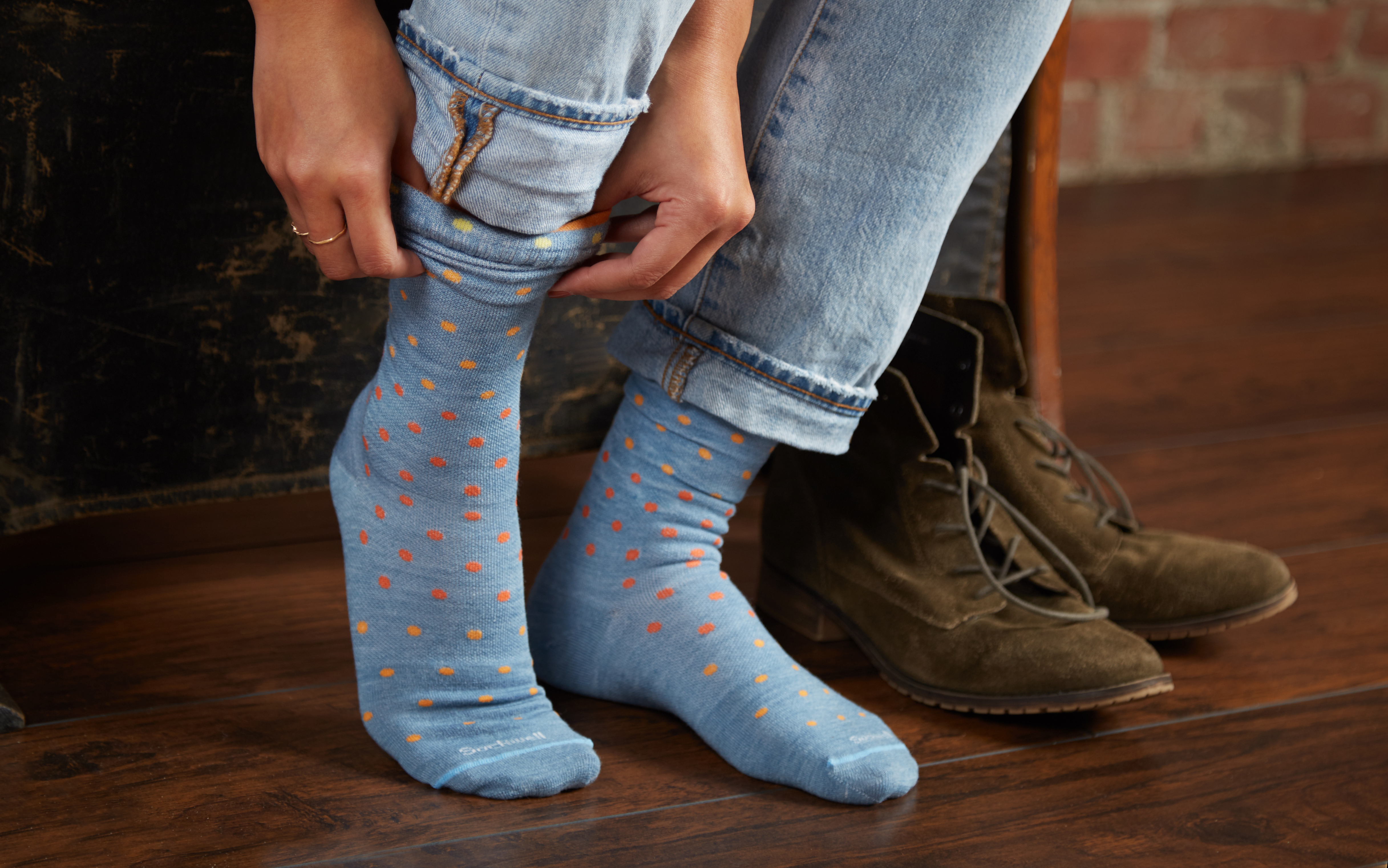Achy legs and feet are far too common, but many people suffer day in and day out not knowing that an effective solution is. within reach. That solution is compression socks. At first glance, these might look like ordinary socks—but they’re so much more. Here’s how to choose compression socks and, as a result, discover how they can improve your comfort and general quality of life.
What Are Compression Socks?
Designed to improve blood flow, compression socks don’t look or function quite like conventional socks. They’re stretchy, but should also be snug, with the goal of gently squeezing the ankle and lower leg. Typically, their unique design allows them to fit tighter near the ankle, followed by a gradual loosening further up the leg.
Who Can Benefit From Wearing Compression Socks?
Compression socks offer significant value for a variety of people. While they are commonly relied upon by older adults with chronic health issues, they can also come in handy for travel and in a wide range of other situations. The following are a few of the common scenarios in which compression socks provide relief:
- Pregnancy. As women progress through pregnancy, they may suffer swelling, varicose veins, and a whole host of other issues. Not only are compression socks perfectly safe for pregnant women to wear, but they also offer considerable relief for those suffering common third-trimester aches and pains.
- Travel. Long flights can prompt considerable discomfort. The more time passengers spend in cramped quarters, the more likely they are to suffer swollen feet or even blood clots. Compression socks can significantly reduce the discomfort associated with long flights, thereby removing one of the greatest downsides of international travel. Take it from the pros, pilots and other aviation professionals regularly rely on compression socks for relief from plane-related discomfort.
- Intense physical activity. From running to playing football, a variety of athletic pursuits call for additional support. The graduated compression these socks provide is thought to improve oxygen delivery and blood circulation. Additionally, many experts believe that compression socks mitigate the long-term damage caused by regular impact.
- Surgery. In the immediate aftermath of surgery, patients may be left immobile. As with those traveling by plane, this immobility can cause increasing discomfort over time. Doctors often recommend compression socks for recovering patients.
Do Compression Socks Work?
Ample anecdotal evidence indicates that compression socks can be a valuable tool for a wide variety of individuals. Beyond this, however, the effects of graduated compression are reflected by empirical research, which highlights the positive impact compression socks can have on seniors, patients, and a variety of other people. For example, a notable 2019 study published in BMC Geriatrics references the strong impact compression socks can have on patients with swollen legs, even reducing the risk of developing leg ulcers.
While researchers have reported mixed results regarding the impact of compression socks on athletic performance, it’s increasingly clear that these socks can play a valuable role in recovery. This is particularly true in the aftermath of intense athletic endeavors such as marathons or triathlons. Research suggests that athletes who use compression socks may experience reduced leg soreness.
Can It Be Dangerous to Wear Compression Socks? Do They Have Any Side Effects?
If worn properly, compression socks should be perfectly safe for most people. However, safe use relies on proper sizing — and not everybody selects the right size or level of compression. If these socks are too tight, they can prompt a variety of mild side effects, including skin redness or irritation. Monitor tightness closely and make note of any problematic changes, as these may indicate the need for less pressure or a larger pair of socks.
How Long Should Compression Socks Be Used?
With compression socks, the ideal length of use largely depends on the person’s needs and preferences. Some people wear compression socks regularly as they go about their daily lives. Others reserve these socks for specific circumstances or occasions, such as intense physical activity or long flights. Most healthy people can safely wear compression socks during the day and take them off at night. Sometimes, extended use may be recommended for those who have recently undergone surgery.
Choosing — And Making the Most of — Compression Socks
If you’ve determined that you stand to benefit from wearing compression socks, you’ll want to select a pair that fit your needs. Keep the following considerations in mind.
Select a Pressure Level
Some compression socks offer extensive pressure, while others offer a milder effect. Sockwell, for example, offers both medium and firm compression socks. Many users prefer to start with a moderate level of compression and then move up to firmer socks if necessary.
Beyond relying on brand labels, it may initially seem difficult to determine the true level of compression in advance. When in doubt, look to mmHG, which indicates ‘millimeters of mercury’ but is essentially used to measure pressure. Medium compression socks may range from 15 to 20 mmHg, while firm socks may reach a full 30 mmHg.

Consider the Socks’ Material
Material may play a role in your final selection. Some compression socks are cotton or nylon, while Sockwell’s stylish men’s compression socks use a high-quality blend of merino wool, rayon from bamboo, stretch nylon, and spandex.

Look for Compression Socks Designed to Address Your Current Aches and Pains
Some compression socks provide general relief, while others specifically address the discomfort brought about by certain conditions. OS1st’s fitness compression socks, for example, stabilize feet and ankles in hopes of easing the pain of plantar fasciitis.
The right compression socks can ease aches and pains while adding a little style to your wardrobe. Now that you know how to choose compression socks, you can invest in a pair (or two) and experience true comfort.


Re. Compression hose, is there availability for women with extra large calves?
[…] Looking for compression socks but not sure the best kind? Learn how to choose compression socks here. […]